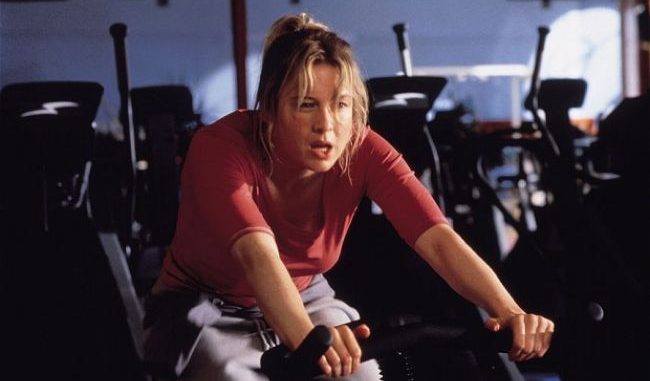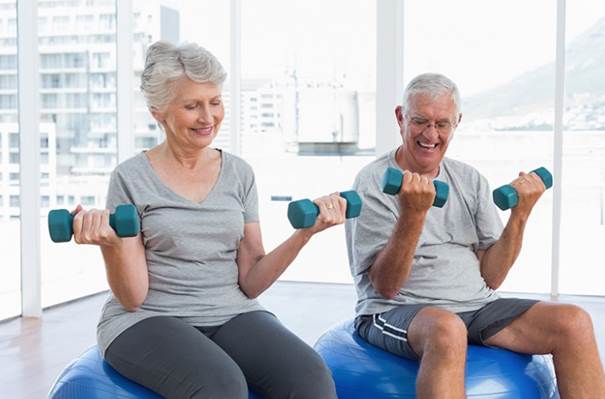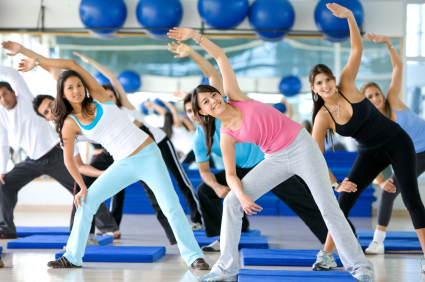
Even if you’ve been sedentary for many years, a slow and steady incremental approach can help you reach your workout goals.
Some people count the time since their last workout in hours or days. But you may count yours in years, maybe even decades. You know you need to start exercising to improve or maintain your health. But, it’s been so long, where do you even start?
The first thing you should know is it’s not too late, says Dr Beth Frates, an assistant professor of physical medicine and rehabilitation at Harvard Medical School and director of wellness programming for the Stroke Research and Recovery Institute at Spaulding Rehabilitation Hospital. Exercise can benefit almost everyone, regardless of age or health status. Provided you get your doctor’s okay, you can start now.
Mind over matter
Women who have been sedentary for years may hesitate to start exercising because they feel intimidated.
“In their mind, everyone else is fit and fabulous, and they’re out of place,” says Dr Frates. “Many of my clients have the mentality, ‘I’m just so overweight. I can’t wear athletic gear. I won’t belong in this class.’”
Or they fear that working out is only for jocks.
“They think, ‘I’m not an athlete, I never was, so I don’t exercise,’” says Dr Frates.
But you don’t have to be a sports star to enjoy movement.
Here are some steps you can follow that can lead you into a more active lifestyle.
Brainstorm
Spend some time on self-awareness, says Dr Frates. Think about what activities you like to do. If you are currently doing nothing, look back to your past and find a time when you enjoyed movement, whether it was swimming or tennis.
“Connecting with your inner child and what you once enjoyed can really help get you off the couch,” she says.
Then think about activities that appeal to you now — whether it’s yoga, a dance class, or even kayaking. Assessing your past and present interests can help you find an activity that you will enjoy. From there, look to see what programmes are available in your community. There are numerous options you might not even be aware of.

“I had a 74-year-old client who decided to take a hula hoop class at her local community centre,” says Dr Frates.
Find the right environment
If you’re hesitant to start exercising because you feel intimidated, look for a beginner’s class at a community organisation or a YMCA, where you are more likely to find others who are also just starting out and probably feel the same way you do.
“Ten years ago, I was intimidated by yoga. I didn’t have any yoga pants. But it was one of those yearnings, and I wanted to try it,” says Dr Frates. “So, I found a beginner’s class at the recreation centre in town and went in my sweat pants and t-shirt. Everyone there was in sweatpants and a t-shirt, too.”
Be patient
If you haven’t exercised in many years, your endurance may be low. If you want to take a class but are afraid that you’ll be beet red and panting after 10 minutes, talk to the instructor up front. Make sure the class is appropriate for beginners. If it is, a good instructor will help you modify the activities so you can build up your endurance gradually over time.

If you can’t do it all at first, that’s okay. But, stick with it.
“If you give up, you’ll never be able to do more than 10 minutes,” says Dr Frates. “After engaging in at least three days of exercise that lasts for at least half an hour, it should become easier.”
Do what you can do – even if it’s only five minutes – and work up slowly. “Your body will accommodate you, and you will gain endurance with time,” she says.
Be pragmatic.
Increase your chances of success by making your activity choice easy and accessible. If you have to drive an hour each way to your class, you might be less likely to go.

“Walking is the simplest thing to start with,” says Dr Frates.
But, you don’t have to choose a formal programme. Set up your house to promote more movement. Get a portable pedalling device to use while you watch television at night, or stand up and walk in place during commercials. Use hand weights while you read your e-mail, or sit on an exercise ball instead of a chair at the computer.
“These simple setups add more movement and less sitting to your day,” says Dr Frates.
Make your programme sustainable
You won’t improve your health if your exercise programme peters out after a week.

“Research shows that when we track things, we tend to stick with them,” says Dr Frates. Use a fitness tracking device or just a simple system of checking off exercise days on your calendar. Remember, it takes time to develop a habit that will stick over the long term. While it may take some effort to get started with an exercise programme, most people find that once they start moving, they often begin to enjoy it.
[10 Everyday Activities That Make You Exercise Without You Knowing It]
Set exercising goals
You’re considered sedentary if you haven’t exercised at least 30 minutes a day, three days a week, for the past three months.

Being sedentary brings significant health risks, including:
? weight gain and obesity
? loss of muscle mass and endurance
? bone loss
? a slower metabolism
? a less robust immune system, and
? reduced blood circulation.
But you don’t have to become a high-level athlete to improve your health. The goal should be to increase your activity gradually, working up to the amount of exercise recommended. For adults, this includes at least 150 minutes of moderate-intensity physical activity each week.
What’s moderate intensity?
It varies, depending on your fitness level. For some people, moderate intensity means walking; for others, it’s a vigorous run. You can tell if you are working at moderate intensity if you are able to talk, but not sing, during the activity.

In addition to moderate-intensity cardiovascular exercise, you should also do strength training that targets all the major muscle groups at least twice a week.
“Most women don’t really think about strength training. We’re not primed for it,” says Dr Frates. “But the truth is, we’re in desperate need to build strength.”
Adding strength training to a regular exercise programme can build muscle mass, which can help you stay independent in your 70s and 80s. People who don’t perform strength training exercises start to lose muscle after age 45.
You don’t need to hit the gym or invest in barbells to build strength. Use your own body weight by performing exercises such as push-ups and sit-ups. Or you can substitute household objects, such as soup cans, for traditional weights to get the benefits of strength training without the inconvenience or cost. – Harvard University/Tribune News Service
Source:-The Star Health

Leave a Reply